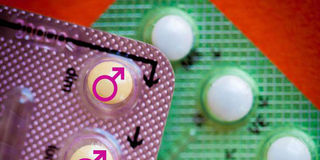Adolescent sexual and reproductive health funding gaps hurt SDGs

There are currently 1.2 billion adolescents between the ages of 10 and 19 worldwide. PHOTO | FOTOSEARCH.
Funding gaps in adolescent healthcare and reproductive health programmes in Kenya are hampering efforts to improve key healthcare indicators under the Sustainable Development Goals agenda. While speaking at a side event during the International Conference on Population and Development summit, Director of the Centre of Excellence in Women and Child Health East Africa Professor Marleen Temmerman noted that although Kenya has made progress in enhancing access to sexual and reproductive health services, it still has a long way to go in achieving the SDGs.
“Early pregnancy is a barrier to the improvement in the education, economic and social status of young women across the world, including Kenya. This leads to many girls dropping out of school, which in the long-run, reduces their employment opportunities and entrenches poverty in the family,” she said. According to estimates by the World Health Organization (WHO), there are currently 1.2 billion adolescents between the ages of 10 and 19 worldwide. In low- and middle-income countries such as Kenya, adolescents make up as much as a quarter of the population with the number expected to rise.
Dr Venkatraman Chandra-Mouli from the WHO noted that studies have shown that investing in adolescent sexual and reproductive health interventions has a profound impact on the health status and economy of a country. “We must advocate to keep adolescent sexual and reproductive health on the agenda. There is also a need to...develop tailor-made health interventions aligned with the needs of adolescents and young people,” he said.



